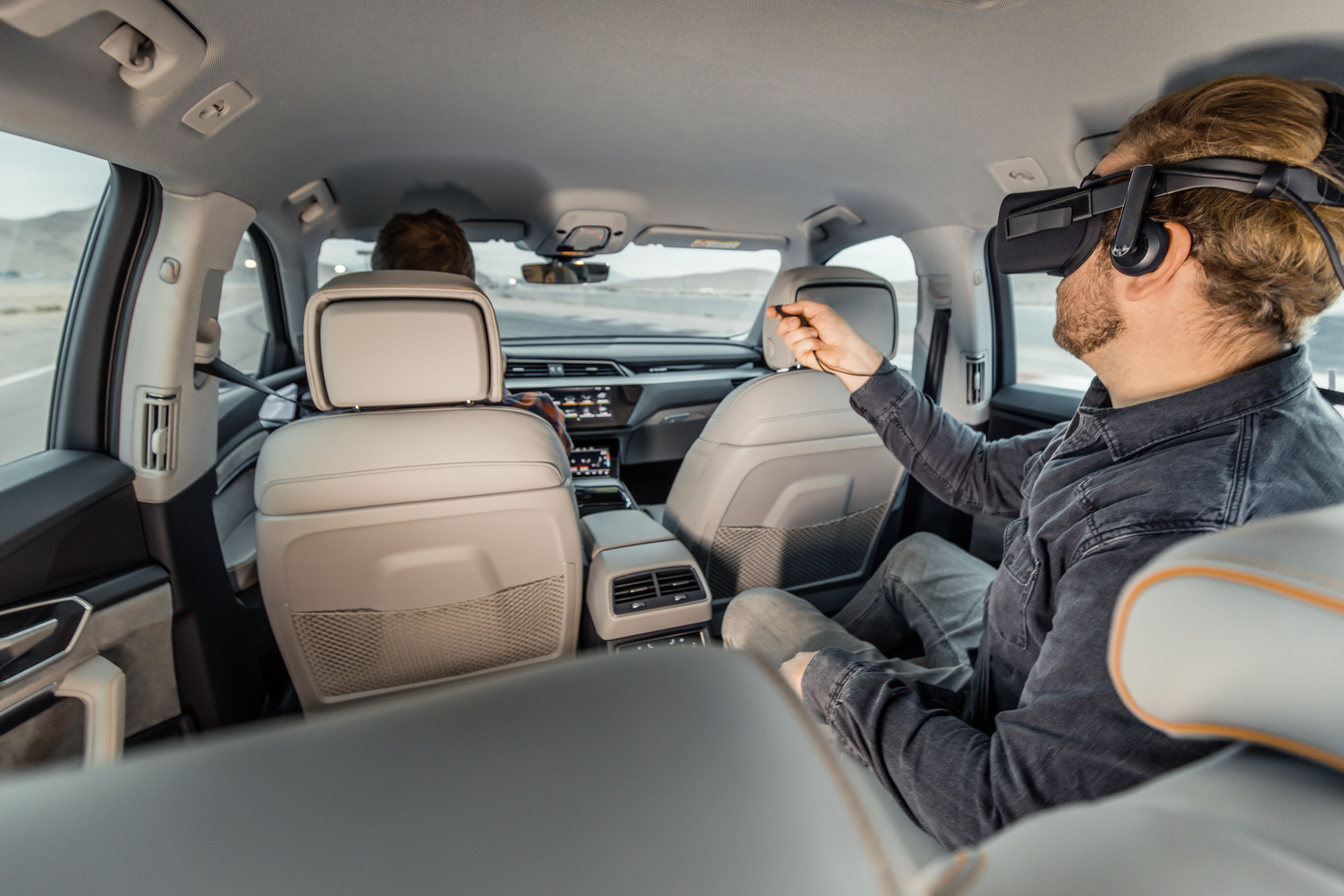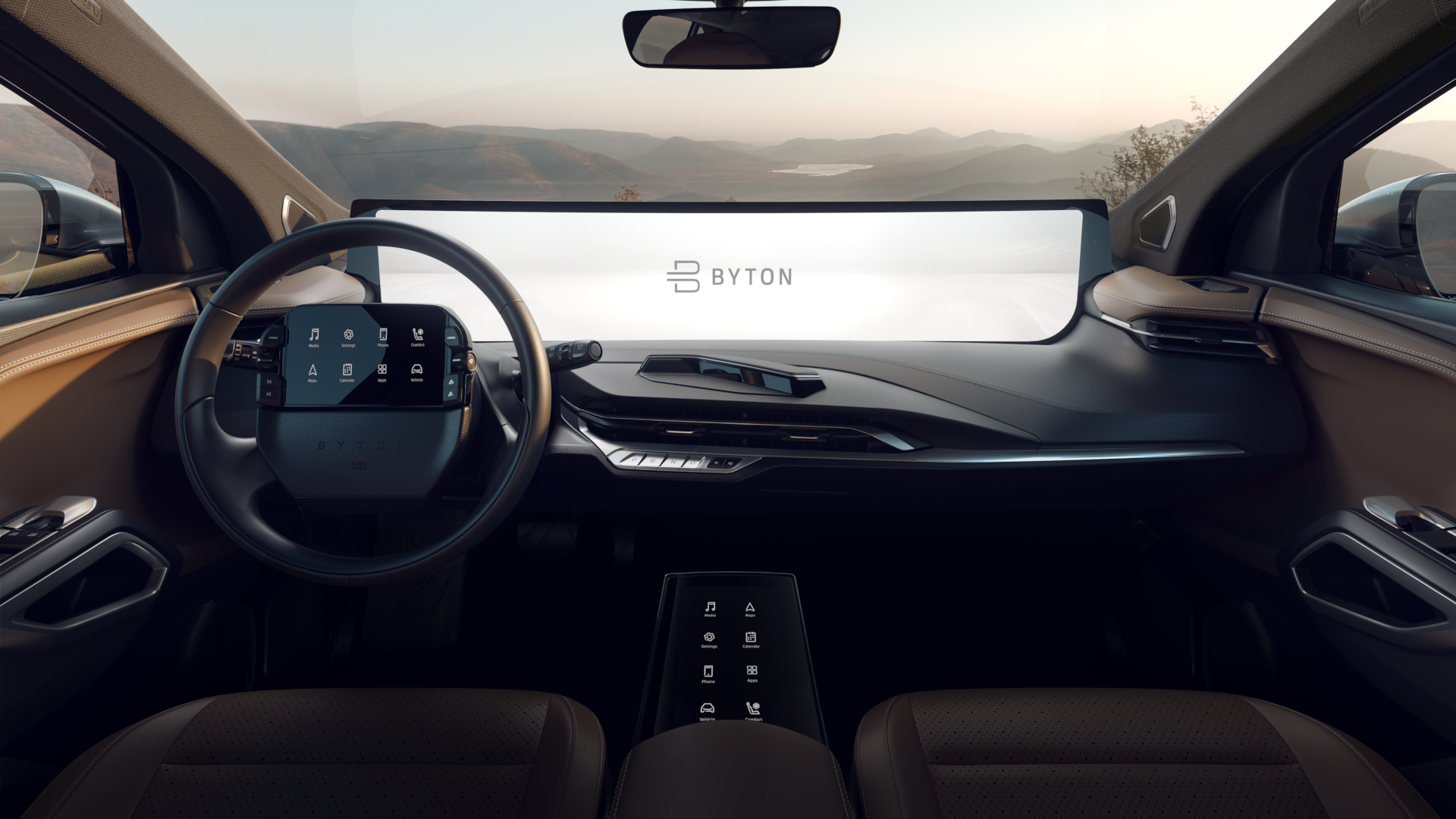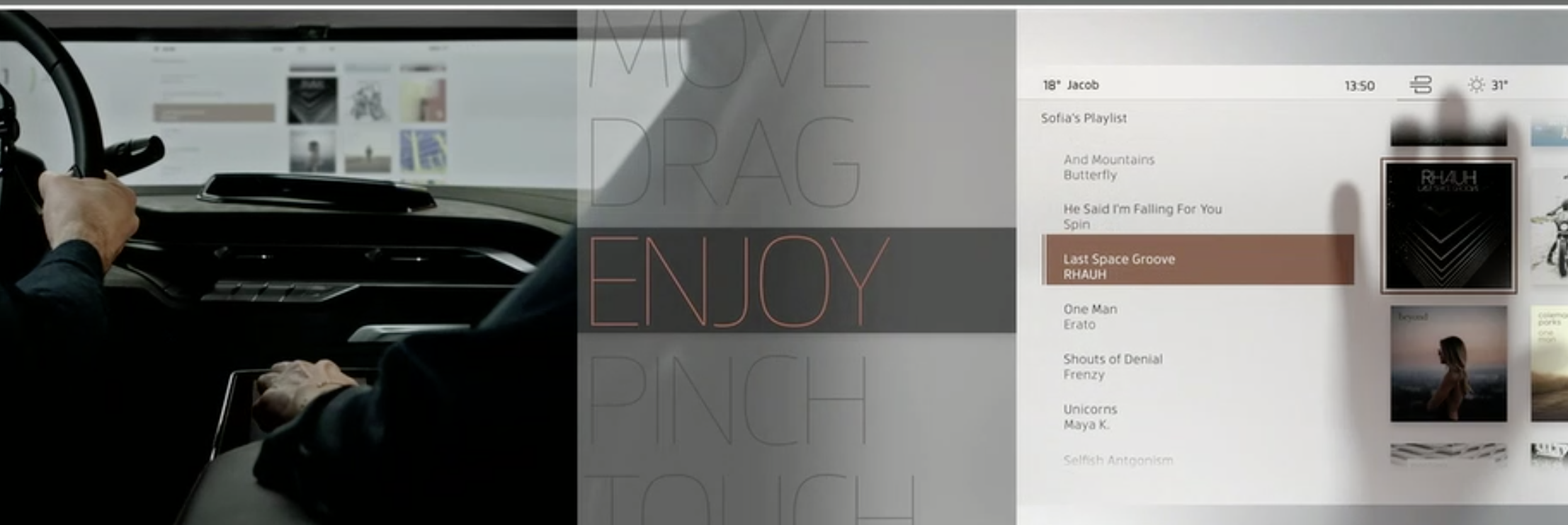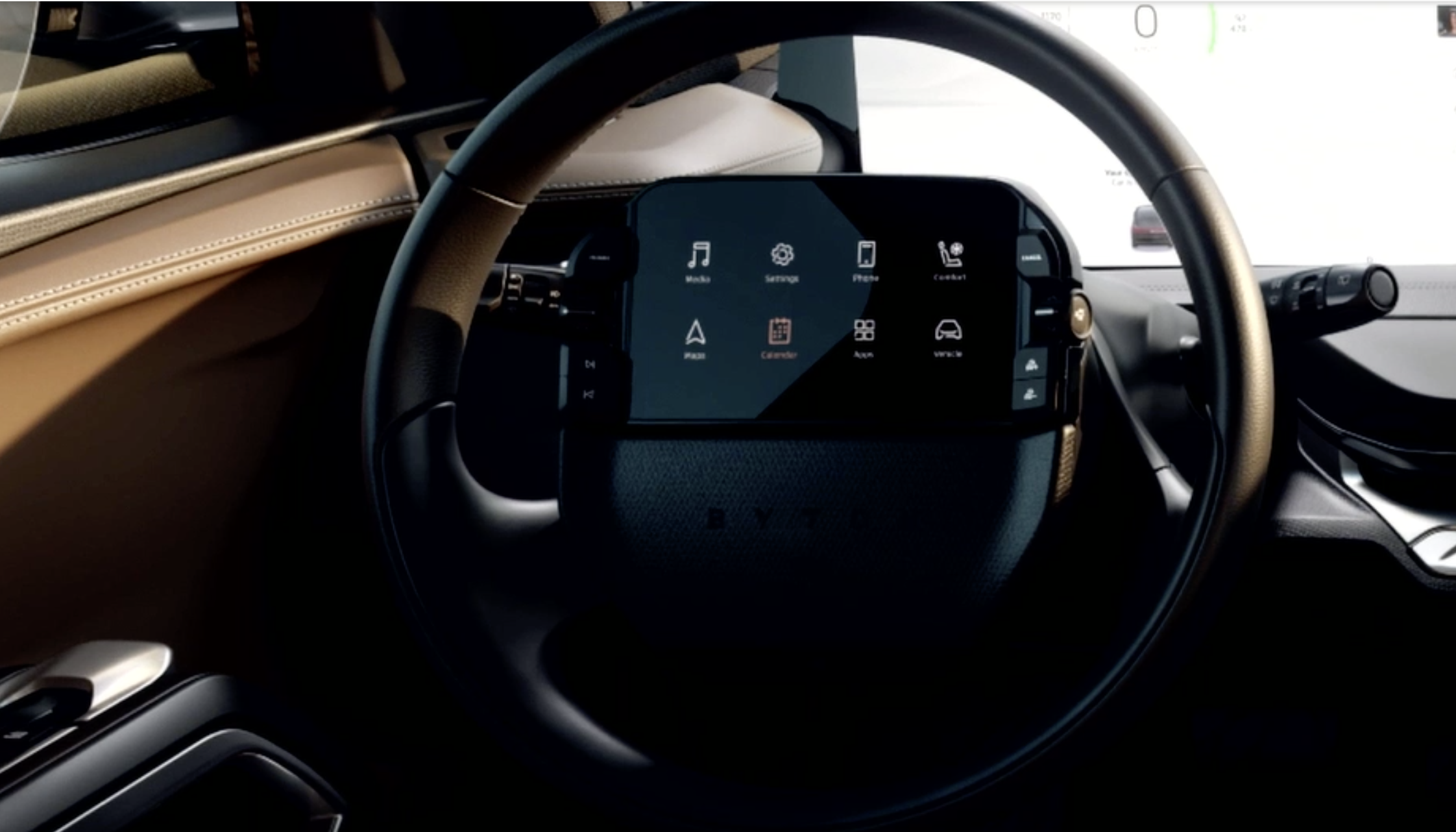The Consumer Electronics Show, like Burning Man, is a massive event in the middle of the desert. Also like Burning Man it is populated by some of the greatest minds in technology. But, unlike Burning Man, these people are all dressed and only a few of them are on hard psychotropic drugs. Also CES is mostly inside.
Here are some tips and tricks I’ve collected over a long career spent staying in awful hotels and wandering around massive conference halls full of things that won’t be released for another year. Hopefully they can be of some use.
Why should you go?
CES is not about innovation. It is about networking with potential buyers. The show is massive and it is popular primarily because it is in Las Vegas, a city so nice they made the movie Casino about it. But the days of you and your brother being dragged out into the corn and beaten to death are gone and what’s left is an adult playground of 24 hour craps and bad drinks.
You are not going to CES to drink and gamble, however. As a startup you are going there to find customers or get press. If you have the hustle and the will you can easily meet hundreds of potential buyers for your technology including some big names who usually buy massive booths to show off their “innovative” systems. When you go bypass the armed booth guards who stand at the front directing traffic and go talk to the most bored person at the booth. This is usually some middle manager who was wrangled into telling people about his company’s most boring innovation. Talk to him or her like a human being, offer to take them out for a coffee, do whatever it takes to get a warm lead inside that massive company. Repeat this hundreds of times.
CES costs $300 and the tickets to LV and the hotel will cost far more. Be sure you’re not cash poor before you go. This isn’t a Hail Mary for your startup, it’s a step along the way.
If you don’t think you can pull off this sort of social engineering I describe then please don’t go to CES or instead send the most personable member of the team. It’s too big and there are already enough nervous nerds walking around.
You haven’t planned yet?
So you’ve decided to go. Do you have tickets? A hotel? At least an AirBnB? It’s pretty much too late right now to get any of those things in time for January 8th but you can try.
Further, if you have a friend who lives there go stay with them. The hotels gouge you during this week. Check out the Excalibur hotel, arguably one the worst on the strip. Right now, you can stay at this illustrious medieval-themed hotel for $25:

Need a smoke-smelling room abutting a flying buttress topped with an animatronic Merlin around January 9? Fear not, my liege!

The best time to book for CES is a year before CES. The second best time is never.
Maybe you’re going to buy a booth. I wouldn’t, but go ahead and give it a try. I like what my friend Tommy here did. Instead of going through one of the countless staffing agencies in Las Vegas he put out a general call for help and he got plenty of responses. Lots of people would be willing to go to Las Vegas to help out for not much cash.
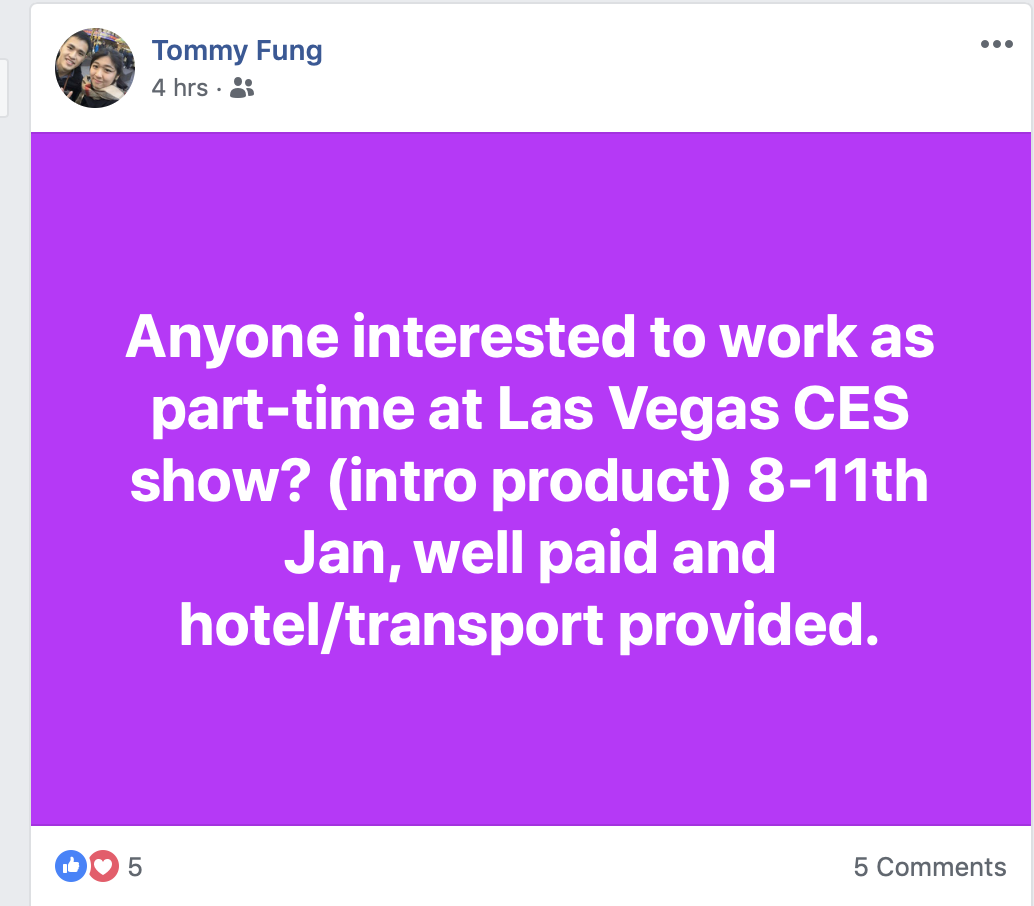
Do everything in your power to stay as close to the Convention Center or Sands (the hall with all the startups) as possible. It is a living hell trying to get around Las Vegas and you’ll thank me later for every hour in a cab line you save for yourself.
Go to where the action is
If you are trying to get press for your product launch then you came to the wrong place. First, if you’re going to CES to launch then you MUST LAUNCH AT CES. I’ve seen too many idiotic startups who flew in, paid for everything, and then told the world they’d launch in like two months or whenever Sven back at the main office in Oslo was done putting the finishing touches on the device driver. If you’re not ready to ship then don’t go.
Do not spam journos about your product unless you know them. Your emails will fall into a black hole.
Further, instead of getting a booth at the show I recommend getting a booth at Showstoppers or Digital Experience. The events costs about $8,000 for a booth and are approximately the same. They are held before the main event and they’re where all the journalists go to get free prime rib and ignore you. It’s also where all of the small market journalists and the weird freelancers who wear fishing vests and live in Scranton wander around so be ready to do a little target acquisition.
Want my advice? Put one person at your booth who can tell your story in two minutes exactly. That person must tell that story as many times as possible and give the odd journalist who will stand there asking dumb questions for an hour the stiff arm whenever someone else comes up. Maximize your message dispersal. Also, if you have product then have about 20 pieces there ready to give away to Engadget, Gizmodo, the New York Times, The Verge, and the like. Don’t give anything to me if I see you. I don’t want that crap in my suitcase.
Now for the ingenious part. Find the most popular food item at the buffets and stand next to it. When a hungry journo comes up to grab a spaghetti taco or whatever you scope out their badge and offer to walk them over to your booth. They’ll harrumph a little but unless they are one of the countless millennial reporters who believe they have to liveblog these events they have nothing else to do that night except for get drunk on gin and tonics. Drag them over to your booth and give them the two-minute pitch. They’ll be so busy eating they won’t be able to ask questions. Write down their email address – don’t ask them for a card – and give them yours. Then email the heck out of them for the next few days to remind them about your launch.
Further, never rent a suite and invite journos to come to you. They have enough trouble getting out of bed let alone getting a cab to your dumb room. If a journo wants to meet you MUST go to them. Don’t make them come to you.
Manage expectations
Like Burning Man, CES is the worst show on the planet held in one of the most unforgiving habitats known to man. As long as you accept these two points you will be fine. You will not “win” CES. At best, CES will give you a kick in the pants in regard to your competition and actual value to the world. Want to know if you have customer fit? Go to CES and meet your customers. Want to see if journalists care about your idea? Pitch them when they are fat and sassy at CES and feeling powerful. That experience will humble even the biggest ego.
Remember: the world is a cold, uncaring place and this is doubly true at CES.
Be careful with PR people

See that animated GIF above? That’s how I manage my CES email. I scroll through the subject lines, look for people I know, and then select all unread and delete them. One of the worst things about CES is that the letters “CES” show up in multiple words and barring writing a regular expression it is very difficult to filter them out. 99% of your CES emails will go unread.
So should you hire a PR person? Yes and no. If you hire them to just send emails then you might as well burn your money. However, if that PR person can lead you around the show and introduce you to folks who can help you get your story out then it might be worth it. Sadly, there is no way to tell how incompetent a PR person is until you get on the ground with them. I know a few I can recommend. Email me. Otherwise be very careful.
Don’t go
Look, CES sucks. I’m not going to lie to you. It’s too big, everyone there is distracted by potential Blackjack winnings and trying to get noticed or launch at CES is akin to holding a poetry reading in the middle of a rock concert: nobody is paying attention and you actually may annoy more people than you reach. It’s your call whether or not you want to give it a try but be ready to hustle. Besides, there’s always next year.
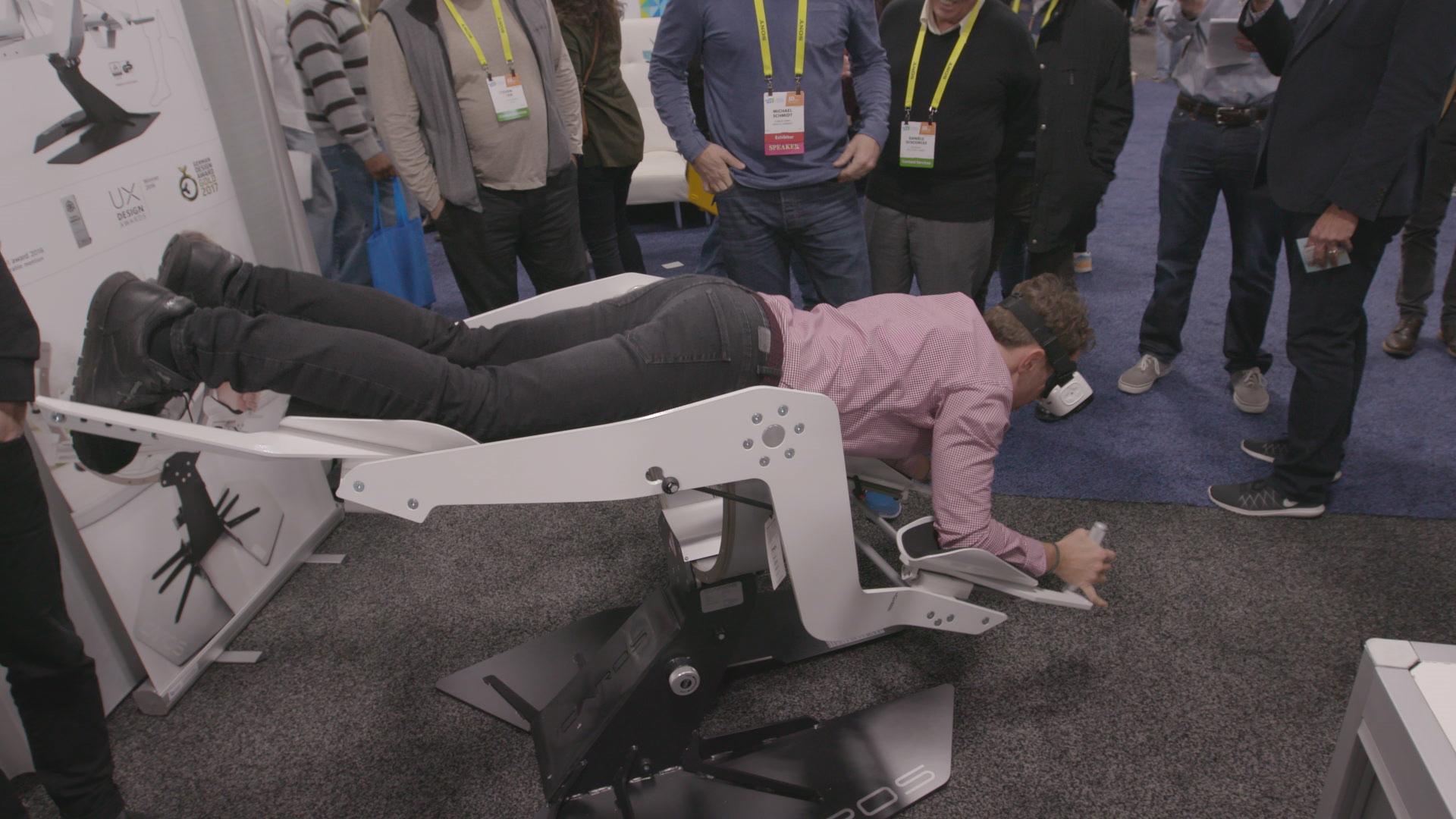
Bonus Tip: Buy a humidifier
I learned this trick from Brian Lam, formerly of Gizmodo: when you land go to Walgreens and buy a very cheap humidifier. Put it in your room and leave it on all day. Las Vegas air is very dry and you’re almost guaranteed to get chapped lips and a cough if you don’t have at least one spot where it doesn’t feel like you’re on the surface of Mars.
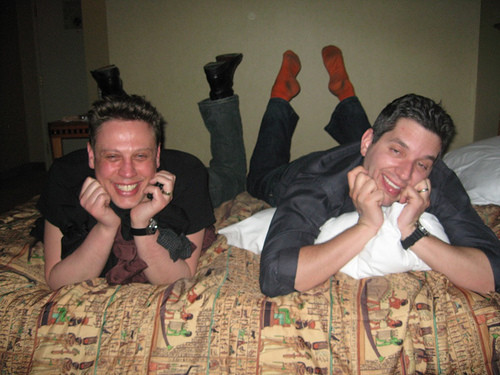
This was us at CES 2008 or so. We were such sweet summer children.

